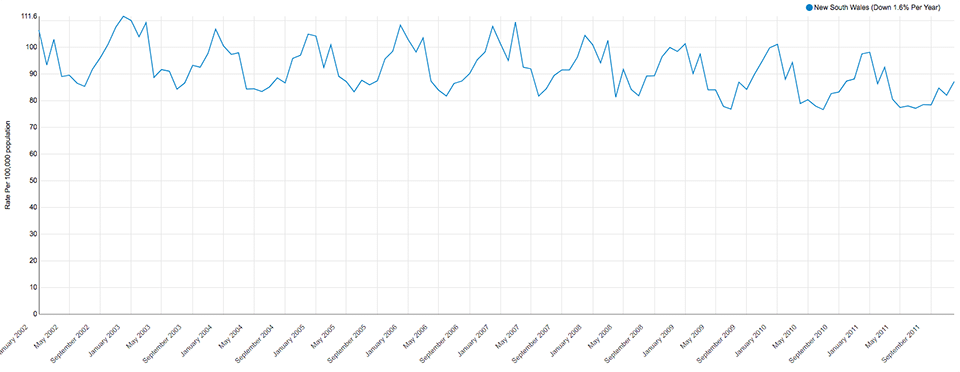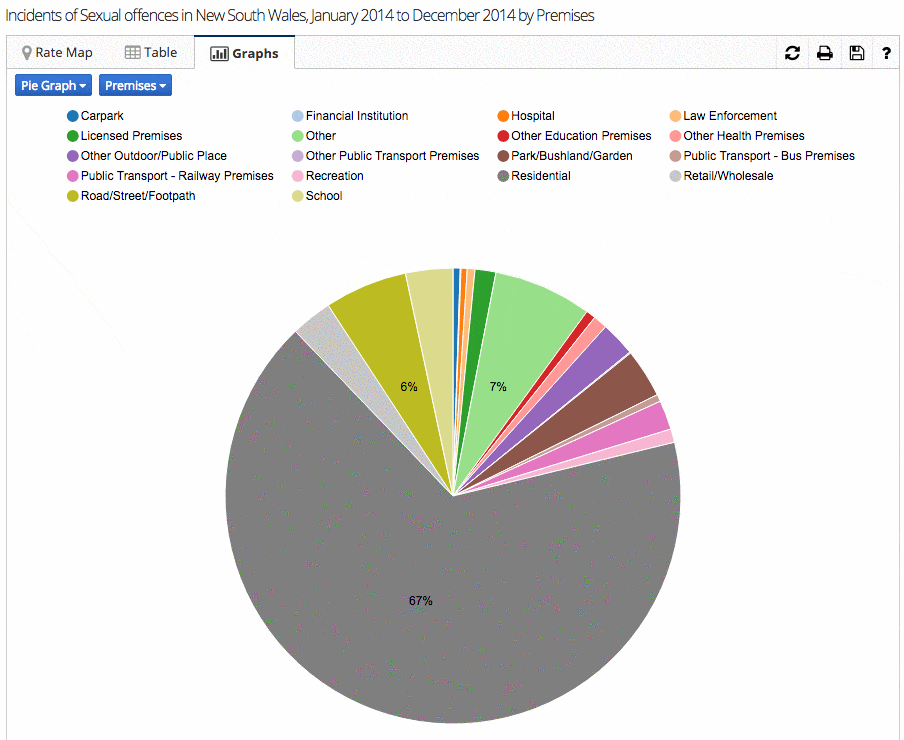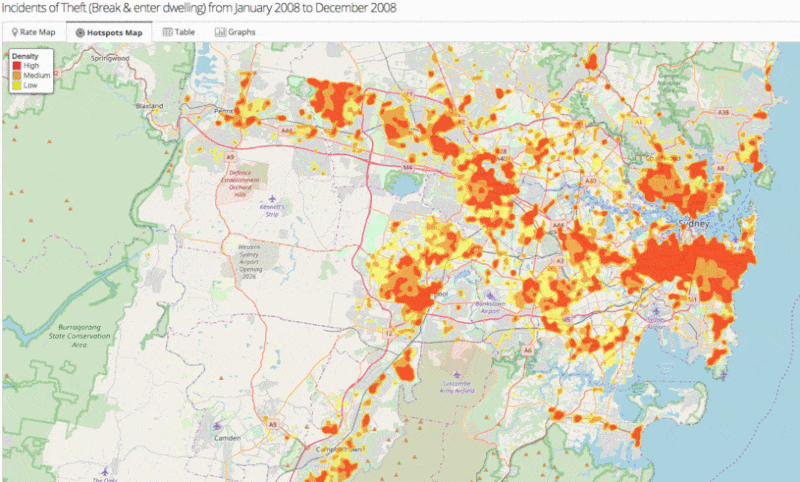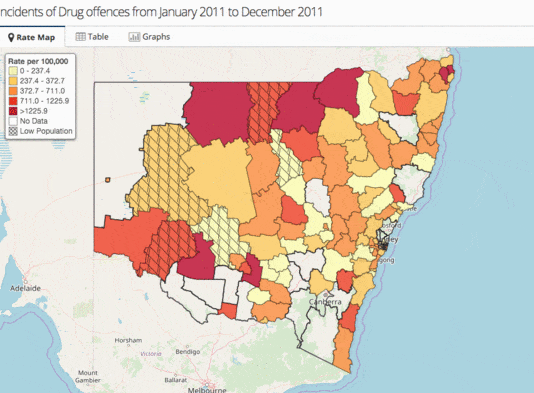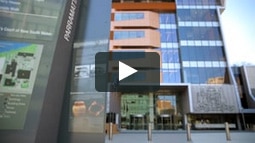Crimes are committed every day. And in the review of Sydney, the rate of crime has dramatically declined over the past 15 years. Though the overall crime rate has decreased, not every category of crime has followed this trend. A shift in focus on specific crimes from both the police and the criminal justice system has contributed to this decline, but social changes have led to the increase of other categories of crime. Looking at 2019 may give us an insight into how crime trends in Sydney continue to shift and change.
Current Crime Trends
The crime rate in Sydney has declined significantly over the past decade, though the rate of incarceration has risen to record numbers. The crime rate decline is not due to a higher incarceration rate, but instead, is due to a shift in focus from street crimes, to more serious crimes such as family violence, sexual assault offences and drug offences.
- Traditional street crimes such as car theft, robbery and burglary have declined. (SMH).
- Home burglary and motor vehicle theft are at an all-time low. (ABC).
- Sexual assault offences have increased by 3.9% in Sydney areas in the last 5 years. (BOSCAR).
- There has been a greater focus on family violence and drug offences over the past decade. (SMH).
- Over the past 5 years, the rate of murder has declined by 7.9%. (BOSCAR).
- The rate of robbery in New South Wales are now back to their 1970’s rate. (ABC).
- The police budge has reached a record $3.9 billion in 2018-19. (SMH)
- Crime rates across New South Wales have fallen to their lowest levels in 40 years. (ABC).
Crime Rate by Area
Crime rates can be categorised by specific areas, illustrating how certain suburbs in Sydney may have higher crime rates than others. It may be natural to assume that crime-prone areas are simply areas where many crime-prone individuals reside. However, factors including attractive commercial or residential targets, poverty, unemployment and income inequality all contribute to crime-prone areas. It is essential to recognise that although some areas are crime-prone, crime occurs in every single area of Sydney.
- Sydney’s suburb, Blacktown has a crime rate of 831.3 per 1000,000 population. (BOSCAR)
- Parramatta has a 1178.1 crime rate per 100,000 population. (BOSCAR).
- Between January 2018 and December 2018, Sydney’s Kemps Creek suburb had the highest rate of crime regarding robbery with a firearm. (BOSCAR).
- Suburbs including Sydney’s Olympics Park, Centennial Park, Granville had the highest recorded rates of homicide between January 2018 and December 2018. (BOSCAR).
- The Liverpool suburb has the highest rate of sexual offences incident, at 161.6 rate per 100,000 population. (BOSCR)
Crime by Category
The Bureau of Crime Statistics and Research suggests that most major categories of crime are declining in New South Wales. The analysis of crimes by category illustrates the changes in our social morals and values as certain categories of crime are declining in rate, whilst others are increasing.
- Robbery offences with a firearm have dramatically fallen 90% from 1990 to 2017. (Lexology).
- 65% of domestic violence-related assault incidents were cleared within 90 days of reporting. (BOSCAR).
- Between 1990 and 2017, reports of Sexual Assault rose by 172%. (Lexology).
- Youth crime is decreasing as teenagers spend more time on their phones. (Business Insider).
- The number of Sexual assault victims in NSW increased by 12% from 2010 and 2017. (ABS).
The Rise and Fall of Specific Crimes
The overall rate of crime has declined dramatically. The fall of crimes such as breaking and entering and car theft has fallen which has contributed to the decline in the overall decline in crime. However, specific crimes, such as drug offences and sexual offences continue to rise. Current changes in morals values illustrate the continuous rise and fall of specific crimes.
- Cocaine and ecstasy possession reports to police inflated more than 30% within the past 5 years. (SMH).
- Social activities, such as music festivals have led to the increased use of prohibited drugs.
- The rate of drug offences has more than doubled. (SMH).
- Sexual Assault offences have increased by 40% within the past decade. (SMH).
- Breaking and Entering offences have decreased from 27,811 to 26,500 from 2017 to 2018. (BOSCAR).
- Offences including theft have decreased from 4,556 to 4227 in 2018. (BOSCAR).
- NSW has the most complaints about sexual assault at 125.3 per 100,000 per capita, an increase of almost 25% since 2010. (Lexology).
Court Trends
The declining rate of street crimes being committed, and the increasing rate of serious offences has led to many changes in the Australian criminal court system. Courts are seeing car theft, breaking and entering cases and greater drug, violence, sexual assault and driving offences. To address issues of recidivism, there is a continuous increase of individuals being incarcerated.
- The number of youths coming into contact with the criminal justice system has decreased by 50% over the last decade. (ANU).
- Due to tougher conditions and fewer people receiving jail, a greater number of people are being kept on remand. (SMH).
- 35% of individuals who went through court had traffic and vehicle regulatory offences. (ABS).
- In 2017, 13,042 individuals were sentenced to prison in NSW. (SMH).
- Fines and charges issued by NSW Police increased by 7% from 2016 to 2017, leading to greater court appearances from individuals. (SMH).
- There was a 2% increase of individuals experiencing the court system from 2017 and 2018. (ABS).
Crime Predictions for 2019
The committal and types of crimes are difficult to predict as social norms and values are continuously changing. However, the analysis of current crime trends illustrates a pattern of crimes being committed now. This analysis will enable a prediction of changes in crime rates and will allow insight into the changes needed to decrease crime and in turn, ensure greater safety in society.
- Australia’s homicide rate has been decreasing since 2005 and is predicted to continue decreasing. (The Conversation).
- Over the next year, the male prison population is forecasted to reach a peak of $12,548 in June 2019 before declining to 12,362 in December 2019. (BOSCAR).
- The female prison population is forecast to rise to 972 in May 2019 before declining to 943 in December 2019. (BOSCAR).
- There has been an increase in drug-related cases. In 2014, 41,266 drug-related reports were created and in 2017, 47,752 reports were made. (SMH).
- The murder rate in NSW has fallen by 69% since 1990 and is predicted to continue falling. (Lexology).
- The NSW Bureau of Crime Statistics and Research show that the NSW prison population is beginning to show signs of decline. (BOSCAR).
If you have additional questions about criminal-related stats or are involved in a criminal case that you require help with, call us today, the most trusted criminal lawyers in Sydney.





